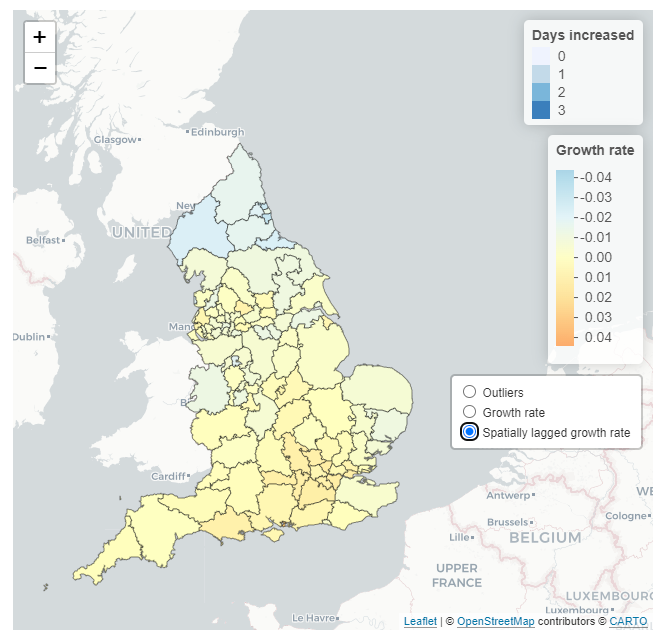Modelling COVID-19 transmission and control strategies.
The COVID-19 pandemic is an example of the potential impact from emerging zoonotic infectious diseases. During the early stages of the pandemic I supported CMMID at LSHTM with their data management pipeline and was a member of the COVID-19 working group. As case numbers in the UK increased during the summer of 2020 I reduced my role in the epidemiological and modelling work to increase the amount of time I could contribute to the clinical response.
The work of the CMMID COVID-19 working group is collected on their website.
A project that was of particular interested was the use of the ASMODEE (Automatic Selection of Models and Outlier Detection for Epidemics) approach. This tool monitored changes in symptoms consisted with COVID-19 through the NHS 111, 999 and online helplines. Using the previous 6 weeks of data from these sources we attempted to monitor local regions where cases may be rising or falling which could feed into decision on localised public health responses.
